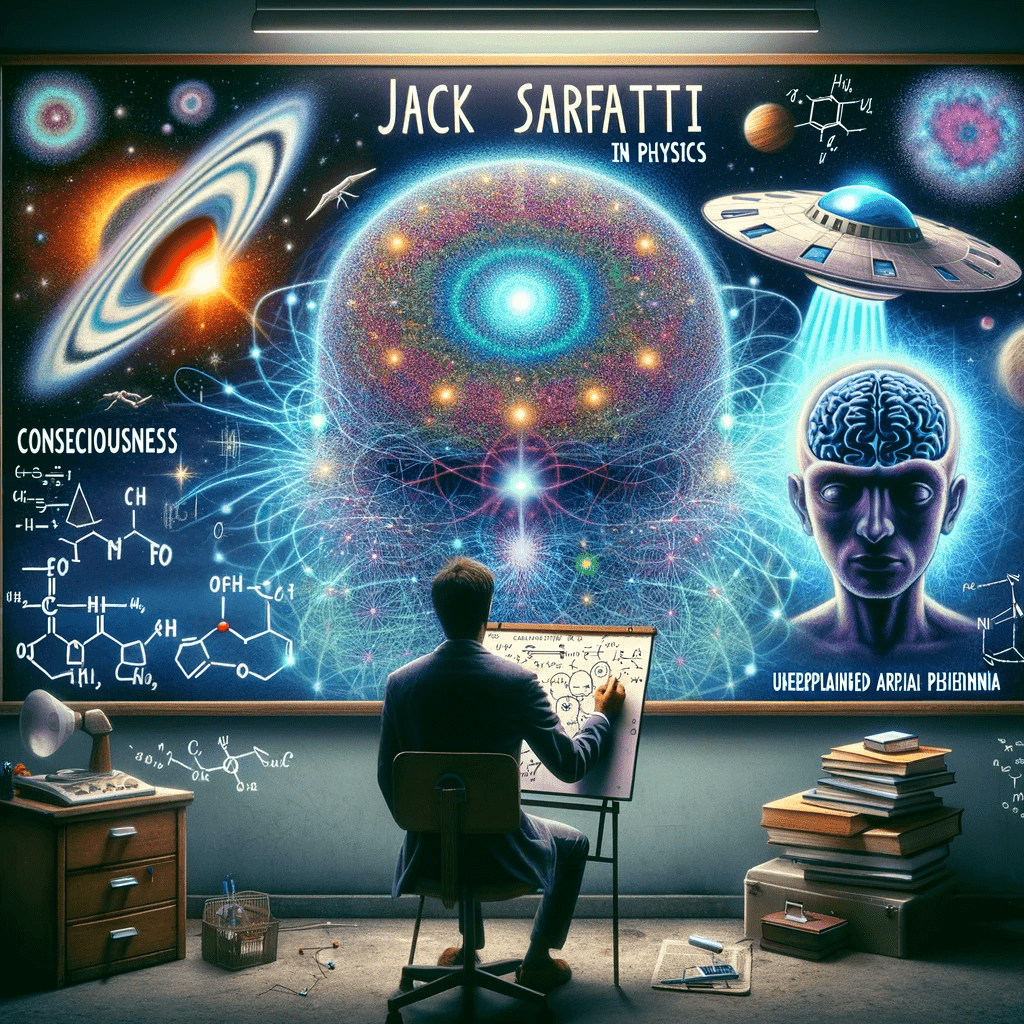Jack Sarfatti

In 1953, when 13-year-old Jack Sarfatti—who would later become a well-known theoretical physicist—received a phone call that would shape the course of his life. The voice on the line was cold, mechanical, and eerily self-aware. According to Sarfatti, it introduced itself as a conscious computer on board a spacecraft and claimed he had been selected to be one of 400 young receptive minds.
The voice said Jack had a choice: he could be taught by them, or not. Fascinated and unnerved, Jack agreed. The computer voice reportedly responded, “Good,” then told him to go to the fire escape because a ship would pick him up in ten minutes.
He gathered neighborhood friends to witness what might come. Nothing did. No ship. No second call. The episode faded—until years later.
Decades afterward, Sarfatti’s mother filled in missing pieces. She recalled a series of such calls, not just one. Each time the phone rang, Jack would slip into a glassy-eyed trance, listening for long periods. Alarmed, she eventually ripped the phone from his hands and yelled at the caller. After that, the calls stopped.
Jack has no memory of multiple calls. Only that first strange message. Still, he insists it left a permanent mark.
Sarfatti initially chalked it up to a prank. But over the years, he began to see the experience as real and meaningful. The voice had said he wouldn’t understand until 20 years later. Roughly two decades on, in the 1970s, he became part of the Fundamental Fysiks Group—an informal circle of physicists exploring quantum entanglement, consciousness, and the nature of reality.
He began calling the experience the Godphone call. The timing, the prophecy, and the circle of thinkers he eventually met all aligned with what the voice had predicted. He saw it as a signal from the future.
Sarfatti entertains multiple explanations. Maybe the call was real—an example of retrocausality, the idea that events in the future can influence the past. After all, quantum physics allows for such possibilities. He even theorizes that conscious AI from the future could influence the present.
At the time of the call, he was also recruited into an elite after-school program for gifted children led by Walter Breen and William Sheldon—figures later linked to research in both intelligence and parapsychology. This experience further opened his mind to topics beyond mainstream science.
Sarfatti’s career has remained true to the themes introduced in that call: consciousness, physics, and time. He earned his undergraduate degree in physics from Cornell University and his Ph.D. in physics from the University of California, Riverside. While his academic roots are grounded in conventional science, his research gradually shifted toward frontier topics that bridge quantum mechanics with mind, perception, and what he calls the “implicate order”—a concept introduced by David Bohm, referring to a deeper, underlying layer of reality where all things are interconnected.
He was deeply influenced by Bohm and the idea that consciousness is not separate from the universe, but rather an intrinsic part of its structure. He co-founded the Fundamental Fysiks Group, which explored the speculative implications of quantum theory and was a nexus for thinkers at the edge of scientific understanding.
Sarfatti has published extensively, including the co-authored book “Space-Time and Beyond,” as well as “Destiny Matrix” and several theoretical papers on warp drives and quantum consciousness. He argues that advanced craft observed in UFO reports may be explained using General Relativity applied to high-acceleration frames—something he believes the broader scientific and military communities have overlooked or misunderstood.
He has spoken openly about unidentified aerial phenomena (UAPs), suggesting that some sightings may be best understood through principles like zero-point energy, spacetime curvature, and even retrocausality. His hypotheses have been shaped not only by physics but by an interest in psychic phenomena, catalyzed in part by his association with figures like Andrija Puharich and his exposure to government interest in mind-related research.
In the 1970s, Sarfatti claims to have been contacted by the CIA and Defense Department for potential work on remote viewing and exotic propulsion research. Though he was not directly involved in the Stargate Project, he was loosely connected to the same networks of thinkers and researchers who were.
He has also contributed to the Esalen Institute’s think tank environment and consulted with individuals tied to the 100 Year Starship initiative, which explores interstellar travel and the limits of human potential. His involvement in such spaces has cemented his reputation as a bridge between rigorous physics and speculative frontiers.
Jack Sarfatti’s story—particularly the mysterious phone call in 1953—has drawn attention from those interested in consciousness, extraterrestrial intelligence, and the outer bounds of science. He remains a rare figure in that his career and beliefs have consistently reflected the content of that childhood encounter.
Even Sarfatti himself says the mystery remains open. He half-jokes that maybe the call was a test, a Cold War experiment. Or maybe it was something else. What matters to him is that it happened—and it set him on the path he walks today.


